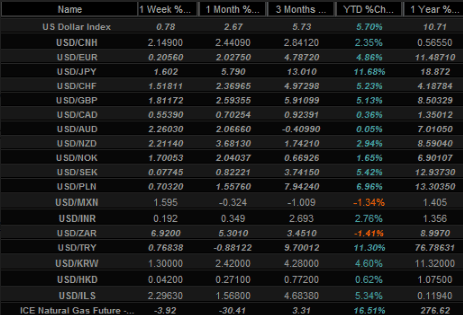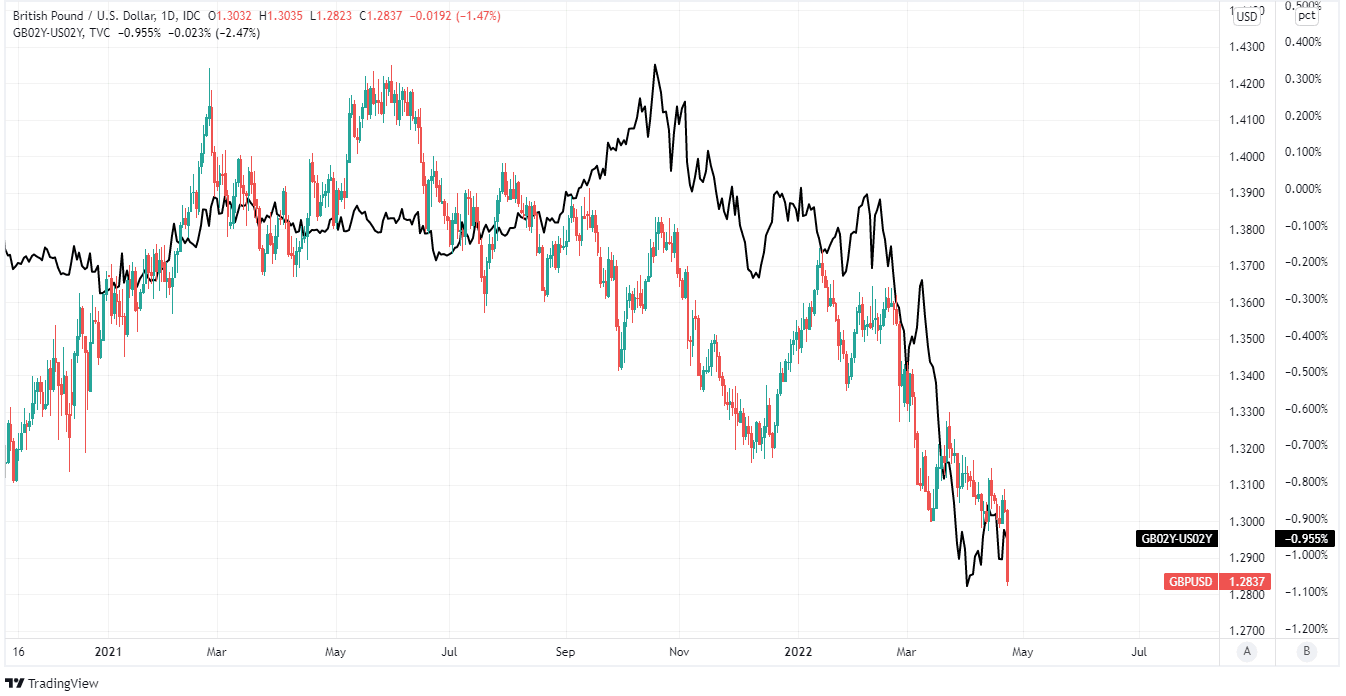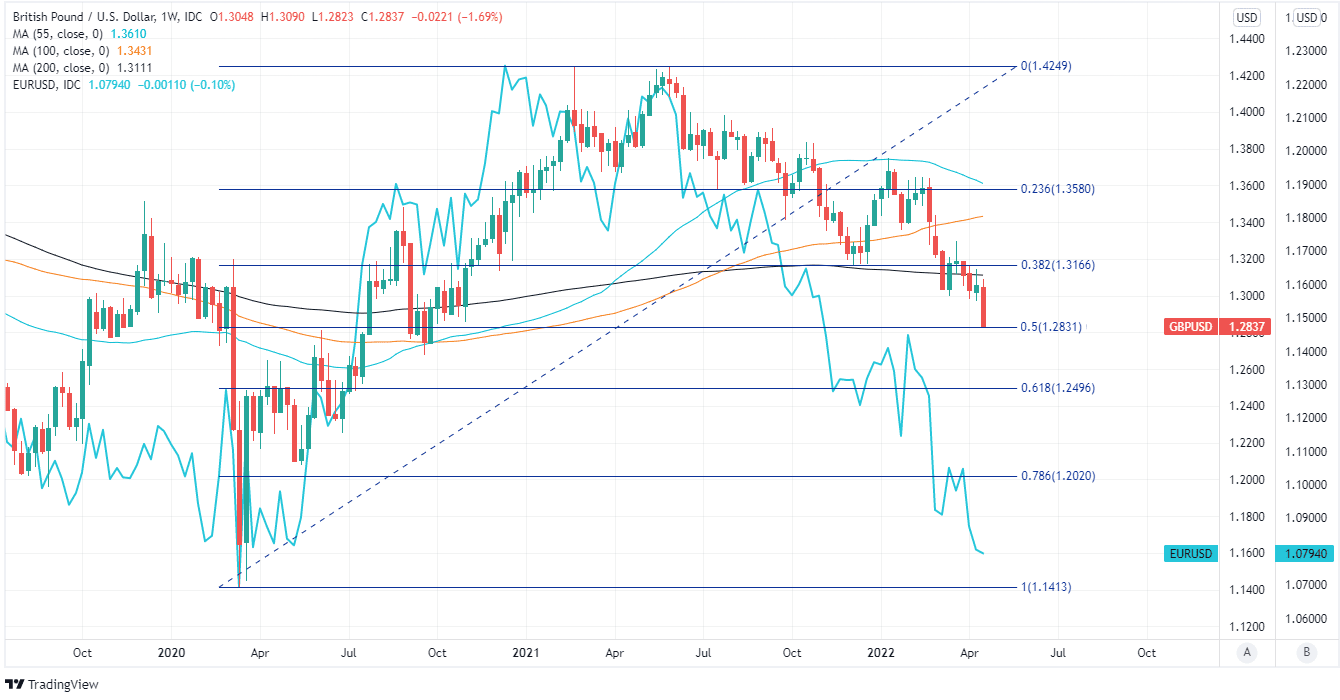GBP/USD Week Ahead Forecast: Downside Risks Linger as Major Support Pressured
- Written by: James Skinner
- GBP/USD testing major support & remains vulnerable
- After USD bolstered by Fed, economic concerns ail GBP
- U.S. PCE data in focus as Fed-BoE divergence weighs

Image © Adobe Images
The Pound to Dollar rate entered the new week testing a major level of support on the charts and with only limited recovery prospects following a lengthy run of losses, while further declines remain a possibility due to an increasingly aggressive Federal Reserve (Fed) monetary policy stance.
Sterling stumbled from the outset last week but fell heavily on Friday when the Dollar was lifted almost across the board by the ever more hawkish sentiments of Federal Reserve policymakers and as a rug was pulled from under the Pound following a dire set of UK economic figures.
The Dollar has risen almost across the board after Fed Chairman Jerome Powell effectively endorsed the market’s recent wager that the bank will likely move forward with a larger-than-usual 50 basis point increase in the Fed Funds rate at its next meeting in May.
“It’s noteworthy that this week has seen both the EUR and CNH weakening against the USD as both dollar pairs are main anchors for the currency,” says Paul Robson, European head of G10 FX strategy at Natwest Markets. (Set your FX rate alert here).
“This suggests monetary policy divergence is dominating. It’s a move we believe has further to go,” Robson and colleagues said on Friday.

Above: U.S. Dollar exchange rate performances over selected horizons. Source: Netdania Markets.
GBP to USD Transfer Savings Calculator
How much are you sending from pounds to dollars?
Your potential USD savings on this GBP transfer:
$318
By using specialist providers vs high street banks
Dollar exchange rates rose broadly last week after Chairman Powell’s Thursday remarks at the International Monetary Fund (IMF) Spring Conference left little doubt that the bank is now focused on normalising its monetary policy settings to the exclusion of all else in its battle to bring down U.S. inflation.
“There is something in the idea of front-end loading whatever accommodation one thinks is appropriate so that points in the direction of 50 basis points being on the table. We make these decisions at the meeting and we’ll make them meeting by meeting but I would say that 50 basis points will be on the table for the May meeting,” Chairman Powell said in Thursday’s International Monetary Fund “debate on the global economy”.
“It may be that the actual peak was in March but we don’t know that so we’re not going to count on it and we’re also no longer going to count on help from supply side healing. If we get that, that would be great.,. But we’re really going to be focusing on raising rates and getting expeditiously to levels that are more neutral and then that are actually tight if that turns out to be appropriate,” Chairman Powell also said of the outlook for Fed policy.
The Fed’s ever more hawkish policy stance already had the Pound-Dollar rate under pressure on Friday even before UK retail sales and PMI figures appeared to vindicate the Bank of England (BoE) for its recently more cautious language about the outlook for UK interest rates.
Above: Pound to Dollar rate shown at daily intervals with spread - or gap - between yields on 02-year UK and U.S. government bonds. Click image for closer inspection.
“The sharp drop in retail sales in March is the first hard evidence that households are struggling to maintain their spending while their real disposable incomes fall,” says Samuel Tombs, chief UK economist at Pantheon Macroeconomics.
“The MPC will tread very carefully over the coming months. Indeed, last week's data surely have quashed the chances of a 50bp rate hike next month; we continue to look for a 25bp increase,” Tombs said in a Friday research briefing.
The BoE has said repeatedly since February that the economic impact of the commodity-induced squeeze on incomes could reduce the extent to which interest rates need to be raised further, but markets have continued to bet Bank Rate will rise from its current 0.75% to more than 2% by year-end.
“We expect policy divergence between the BoE and Fed to become even more apparent in the coming months. Building evidence of a more abrupt slowdown for the UK economy will make the BoE cautious,” says Lee Hardman, a currency analyst at MUFG.
Above: Pound to Dollar rate at weekly intervals with Fibonacci retracements of 2020 recovery indicating medium-term areas of technical support for Sterling, and shown alongside EUR/USD. Click image for closer inspection. Click image for closer inspection.
GBP to USD Transfer Savings Calculator
How much are you sending from pounds to dollars?
Your potential USD savings on this GBP transfer:
$318
By using specialist providers vs high street banks
“In contrast, the Fed is now more determined to front-load rate hikes to get the policy rate back to their neutral estimate of around 2.50% through the rest of this year, and there is less risk of a sharper immediate slowdown for the US economy,” Hardman said in a Friday note.
All of this has helped drive the Pound-Dollar rate to its lowest since September 2020 and left it testing a significant level of support on the weekly charts.
The highlight of the week ahead of this Thursday and Friday’s respective releases of first quarter U.S. GDP data and the March Core PCE price index, which is the Fed’s preferred measure of U.S. inflation and a possible downside risk to the Dollar this week.
This is because the economist consensus envisages a second consecutive decline in the month-on-month rate of inflation, which would fuel speculation about a possible peak in U.S. price pressures and could also potentially take wind from the Dollar’s sails over the coming days.
“The USD remains well bid on hawkish rhetoric from the Fed. That said, since the publication of an 8.5% y/y print for US CPI inflation on April 12, a debate about whether the US has reached ‘peak inflation’ has been demanding attention,” says Jane Foley, head of FX strategy at Rabobank.






